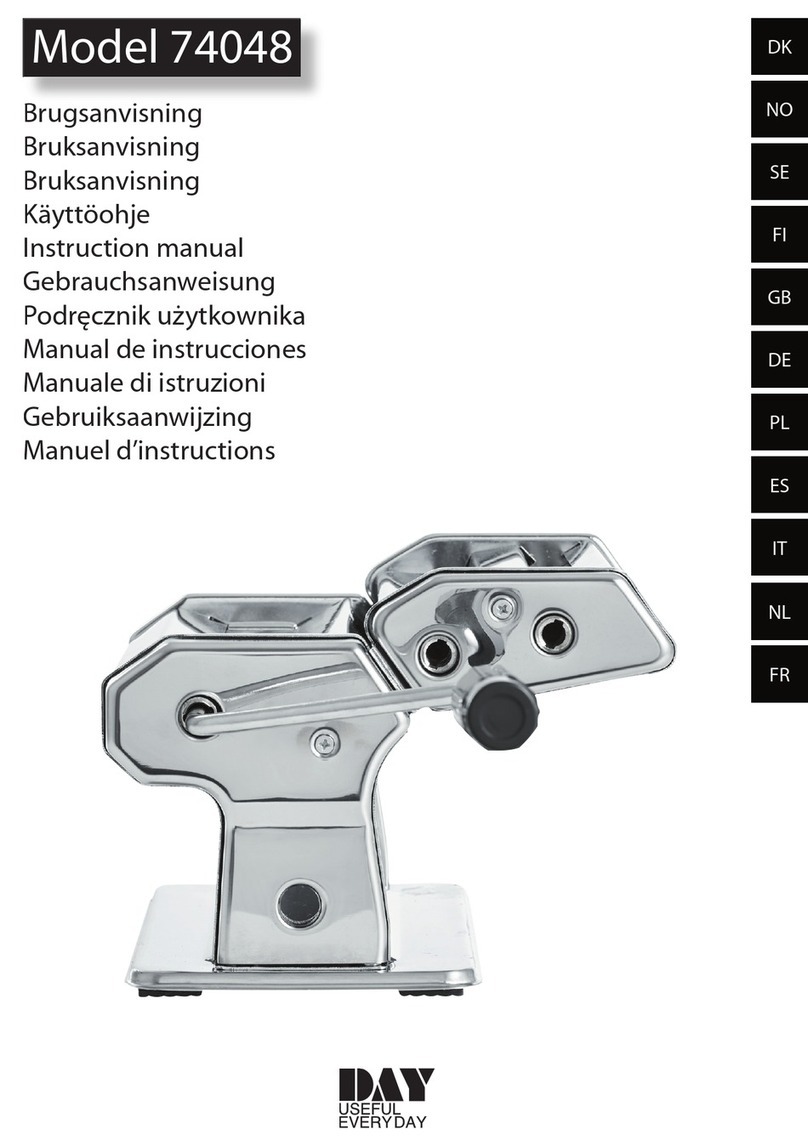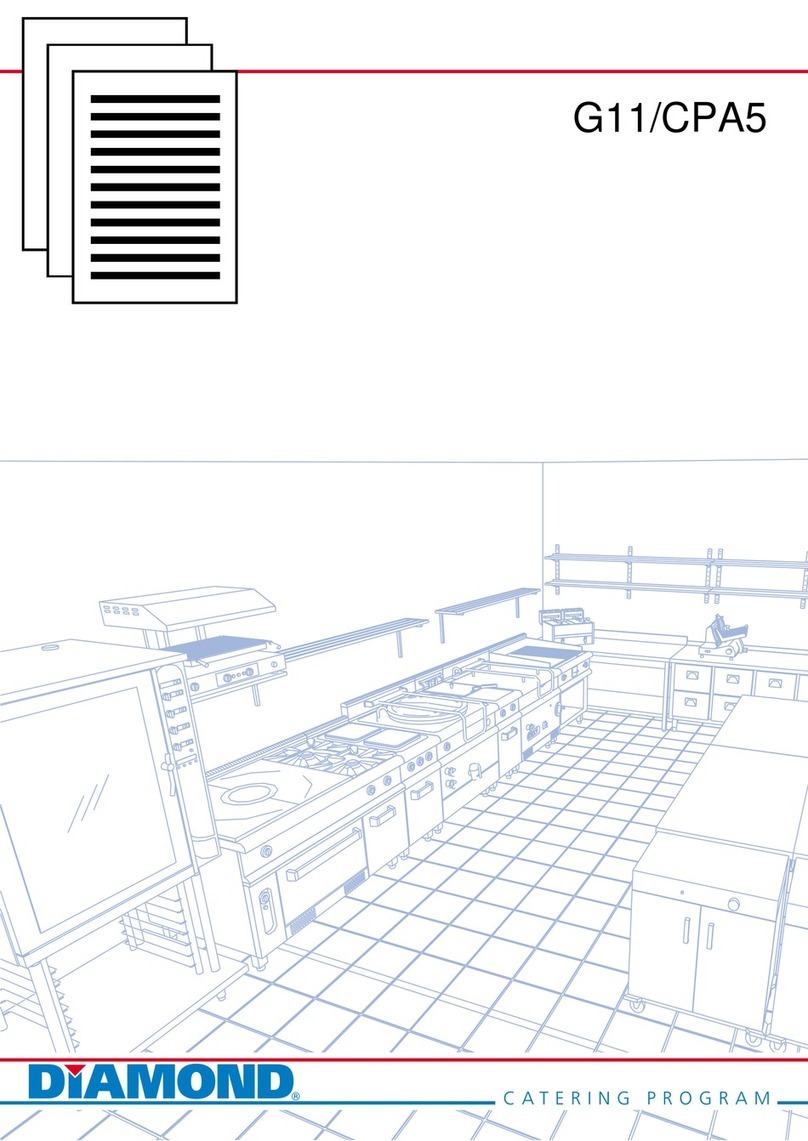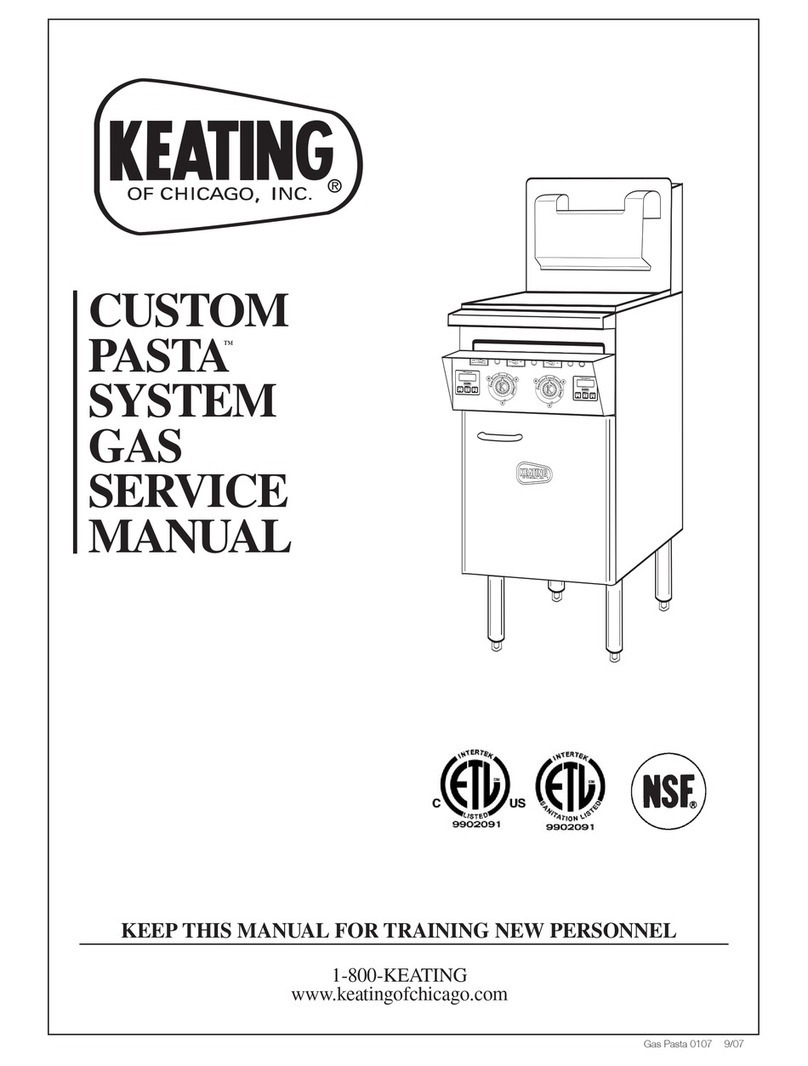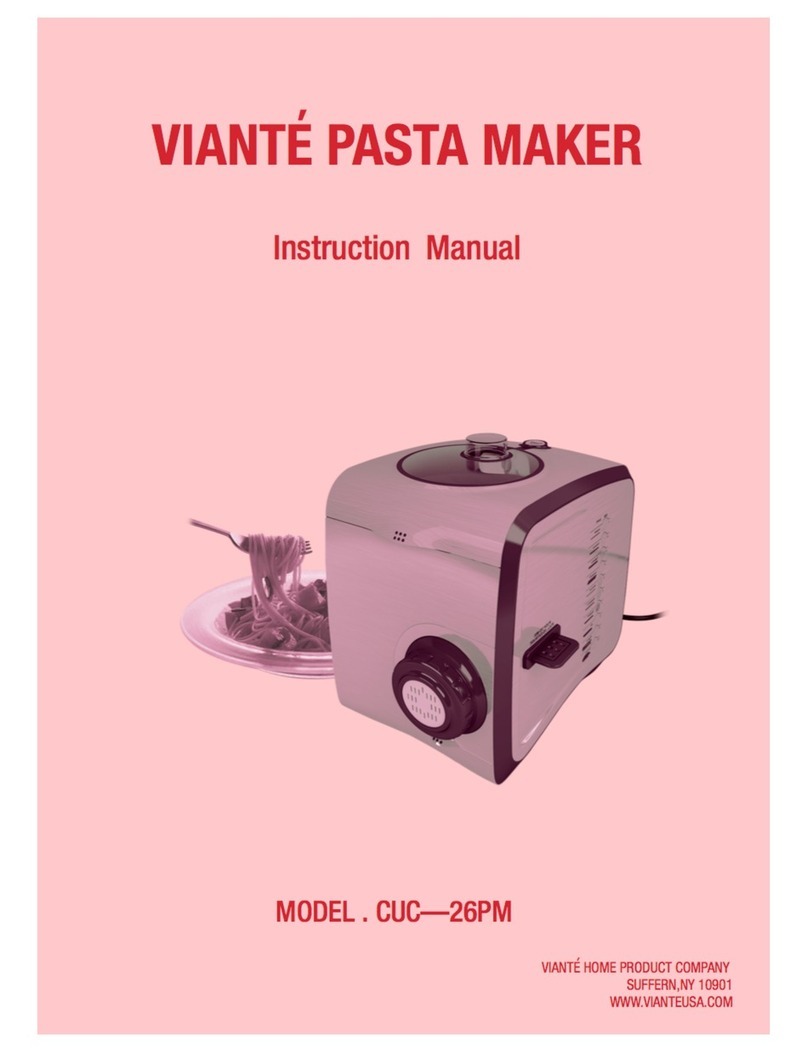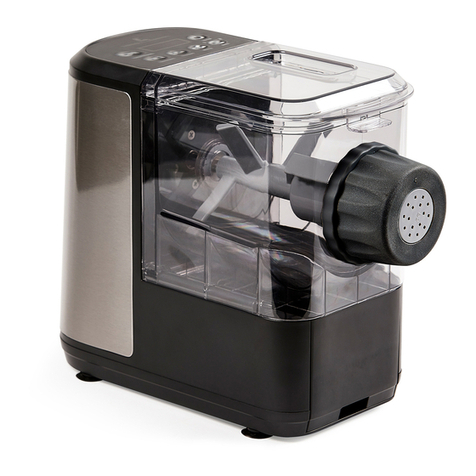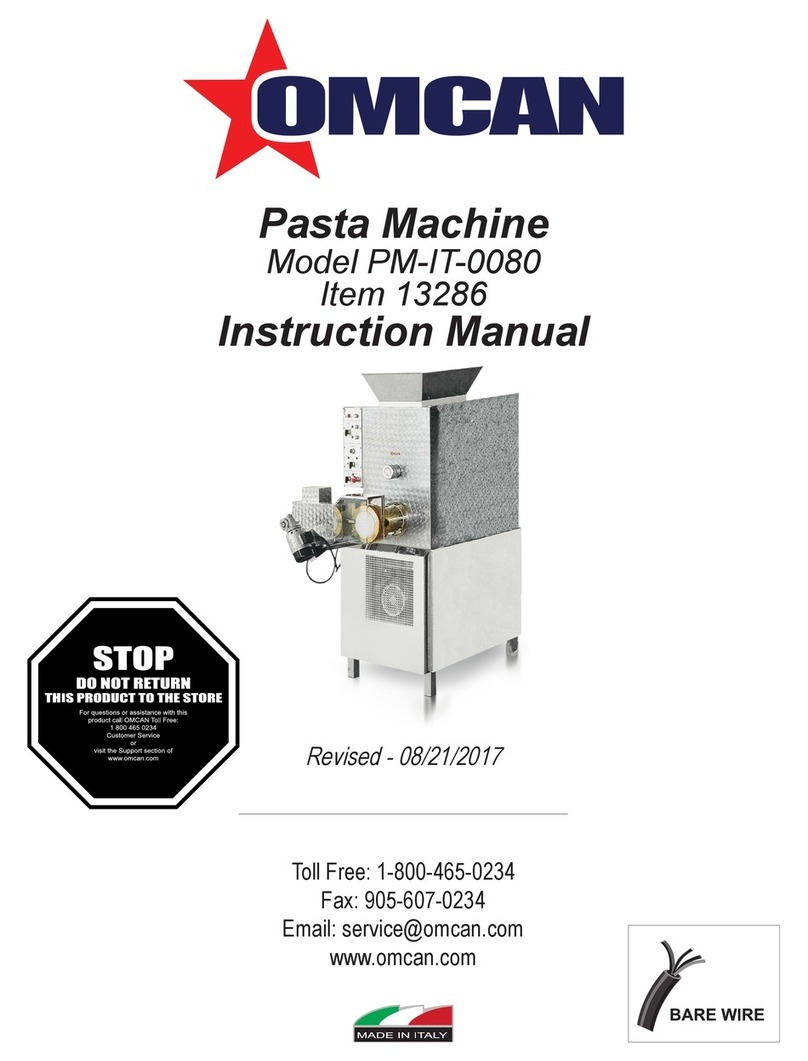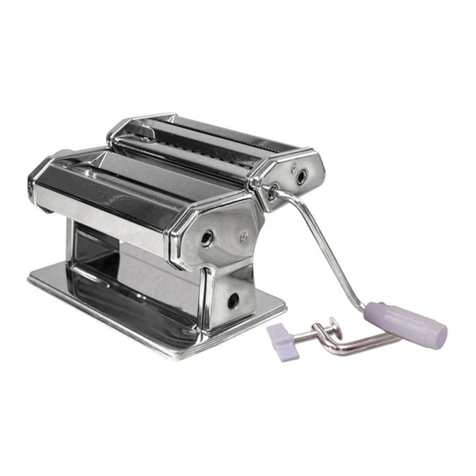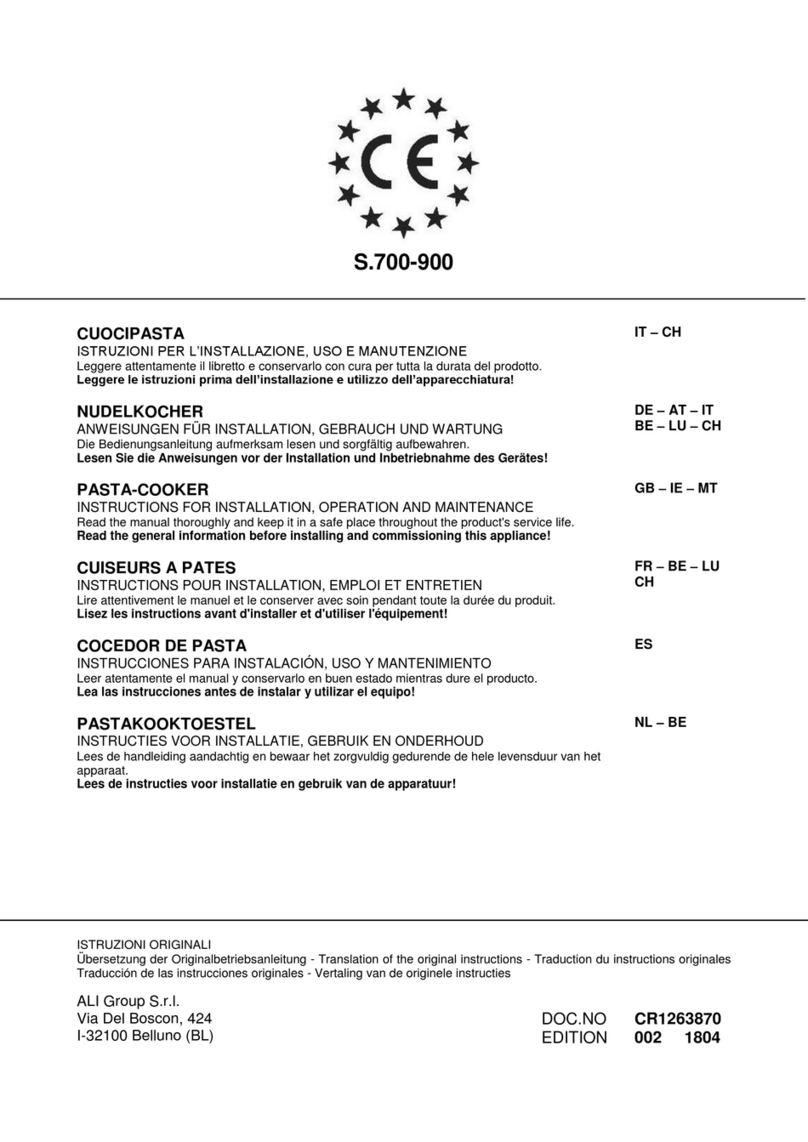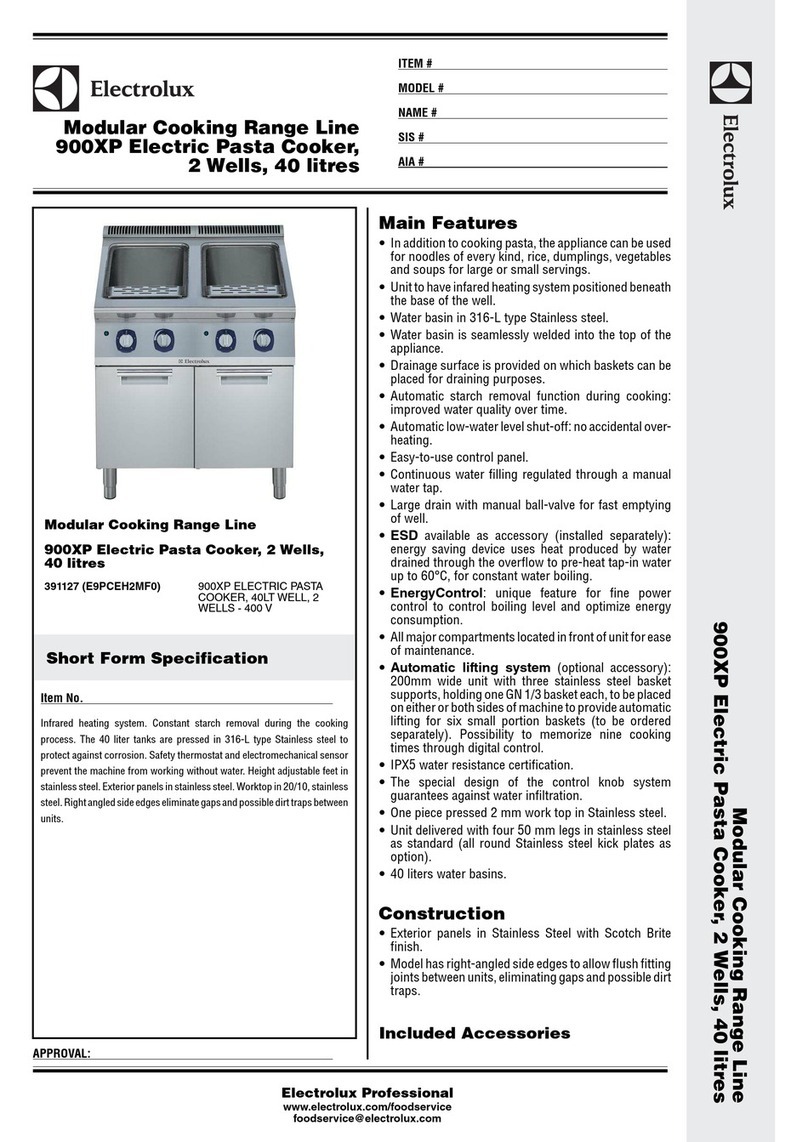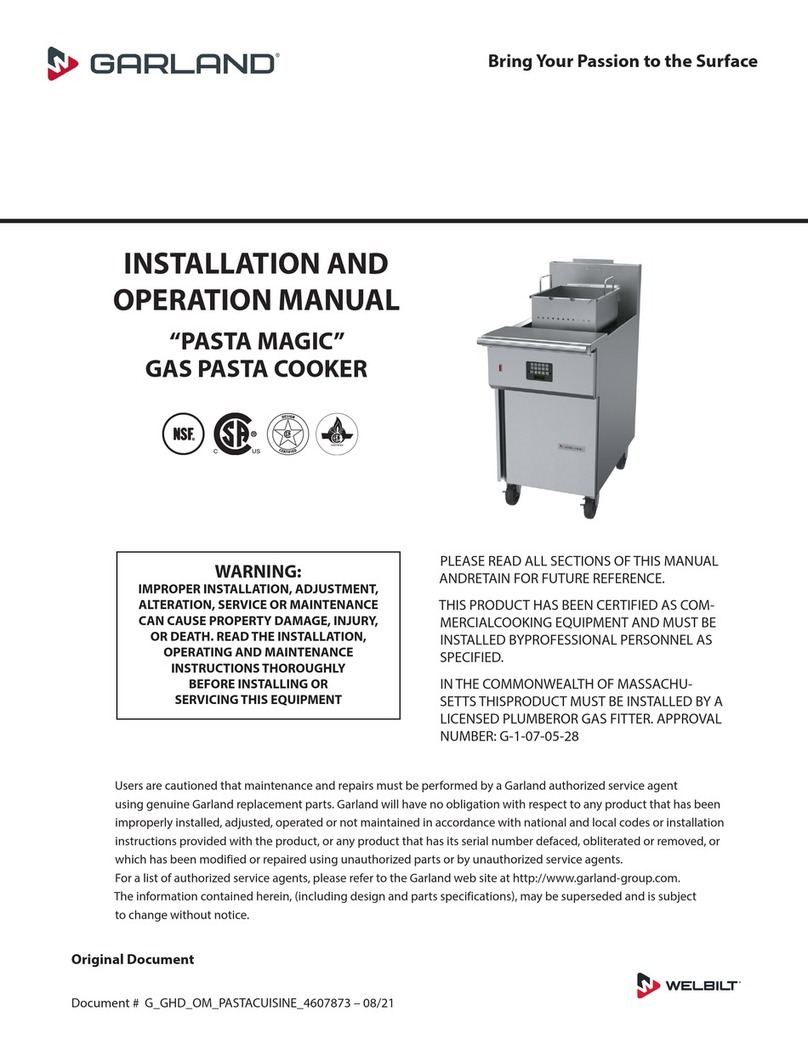
- 4 -
THE PRESENT MANUAL IS PROPERTY OF THE MANUFACTURER. ANY REPRODUCTION, EVEN PARTIAL, IS PROHIBITED.
The appliance must be installed in a su-
itable place, namely, one which allows
normal running, routine and extraordi-
nary maintenance operations. The ope-
rating area for maintenance must be set
up in such a way that the safety of the
operator is not endangered. The room
must also be provided with the features
required for installation, such as:
•
maximum relative humidity: 80%;
•
minimum cooling water temperature
> + 10 °C ;
•
the floor must be anti-slip, and devi-
ces positioned perfectly level;
•
the room must be equipped with a
ventilation system and lighting as
prescribed by standards in force in
the country of the user;
•
the room must be set up for draining
greywater, and must have switches
and gate valves which cut all types
of supply upstream the appliance
when needed;
•
The walls/surfaces immediately clo-
se/contact to the appliance must be
fireproof and/or isolated from possi-
ble source of heat
TEST INSPECTION AND WAR-
RANTY /
Testing: the equipment has
been tested by the manufacturer during
the assembly stages at the site of the
production plant. All certicates related
to the testing performed will be deli-
vered to the customer upon request.
Guarantee: the warranty is 12 mon-
ths from the date of invoicing of the
equipment, this period cannot be ex-
tended. It covers the faulty parts only.
Carriage and installation charges are
for the buyer’s account. Electric com-
ponents, accessories as well as other
removable parts are not covered by the
guarantee. Labor costs relating to the
intervention of authorized by the manu-
facturer at the customer’s premises, for
removal of defects under warranty are
charged to the dealer. Excluded are all
tools and supplies, possibly supplied by
the manufacturer together with the ma-
chines. Damage occurred in transit or
due to incorrect installation or mainte-
nance can’t be considered. Guarantee
is not transferable and replacement of
parts and appliance is at the nal discre-
tion of our company. The Manufacturer
is responsible for the equipment in its
original conguration and only for origi-
nal spare parts replacement. The ma-
nufacturer declines all responsibility for
improper use, for damages caused as a
result of operations not covered in this
manual or not authorized in advance by
the manufacturer.consideration in this
manual or without prior authorisation of
the manufacturer himself.
THE WARRANTY TERMINATES
IN CASE OF /
• Damage caused by
transport “ex works” (EXW) and / or by
handling, should this event occur, the
customer must inform the retailer and
the carrier via fax / mail or RR and write
down on the copies of the transport do-
cuments what It’s happened. The tech-
nician authorized to install the applian-
ce will evaluate the damage and decide
if the installation can be carried out.
The warranty also terminates in the
presence of: • Damage caused by in-
correct installation. / • Damage caused
by parts worn due to improper use. /•
Damage caused by use of non-origi-
nal spare parts. / • Damage caused by
incorrect maintenance and/or lack of
maintenance. / • Damage caused by
failure to comply with the procedures
described in this document.
AUTHORISATION /
Authorisation
refers to the permission to operate an
activity intrinsic to the appliance. Au-
thorisation is given to anyone who is
responsible for the appliance (manu-
facturer, purchaser, signer, dealer and/
or location owner).
TECHNICAL DATA and IMAGES /
The section is at the ending of this
manual.
GENERAL AND SAFETY INFORMATION


